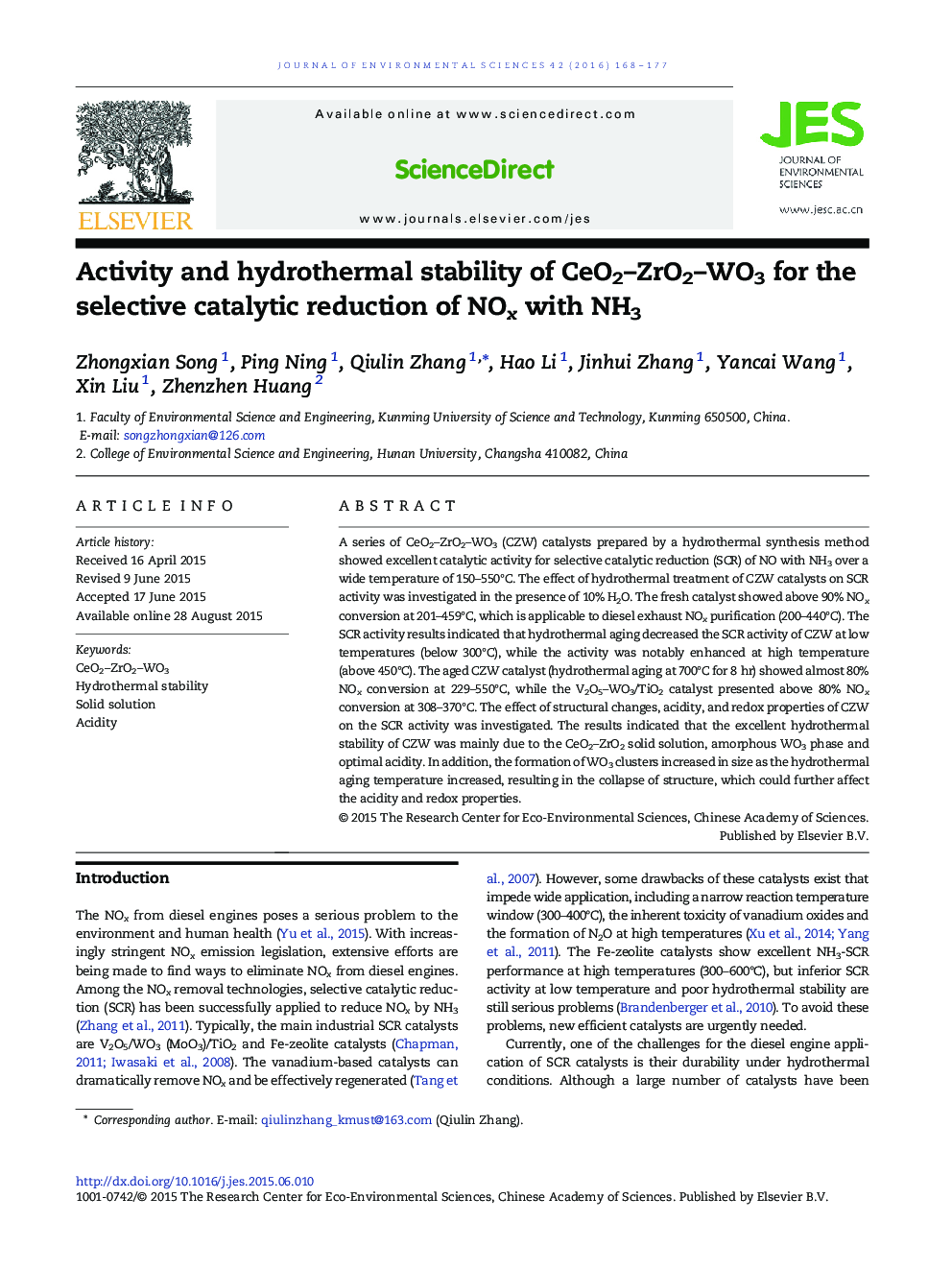| Article ID | Journal | Published Year | Pages | File Type |
|---|---|---|---|---|
| 4453803 | Journal of Environmental Sciences | 2016 | 10 Pages |
A series of CeO2–ZrO2–WO3 (CZW) catalysts prepared by a hydrothermal synthesis method showed excellent catalytic activity for selective catalytic reduction (SCR) of NO with NH3 over a wide temperature of 150–550°C. The effect of hydrothermal treatment of CZW catalysts on SCR activity was investigated in the presence of 10% H2O. The fresh catalyst showed above 90% NOx conversion at 201–459°C, which is applicable to diesel exhaust NOx purification (200–440°C). The SCR activity results indicated that hydrothermal aging decreased the SCR activity of CZW at low temperatures (below 300°C), while the activity was notably enhanced at high temperature (above 450°C). The aged CZW catalyst (hydrothermal aging at 700°C for 8 hr) showed almost 80% NOx conversion at 229–550°C, while the V2O5–WO3/TiO2 catalyst presented above 80% NOx conversion at 308–370°C. The effect of structural changes, acidity, and redox properties of CZW on the SCR activity was investigated. The results indicated that the excellent hydrothermal stability of CZW was mainly due to the CeO2–ZrO2 solid solution, amorphous WO3 phase and optimal acidity. In addition, the formation of WO3 clusters increased in size as the hydrothermal aging temperature increased, resulting in the collapse of structure, which could further affect the acidity and redox properties.
Graphical abstractThe CZW catalyst shows more excellent catalytic activity and better resistance to hydrothermal treatment than the V2O5–WO3/TiO2 catalyst. After the hydrothermal treatment at 700°C for 8 and 96 hr, the grain size increases from 19 to 30 and 37 nm, respectively. Besides, the aged CZW catalyst also exhibits above 80% NOx conversion at 230–550°C.Figure optionsDownload full-size imageDownload as PowerPoint slide
